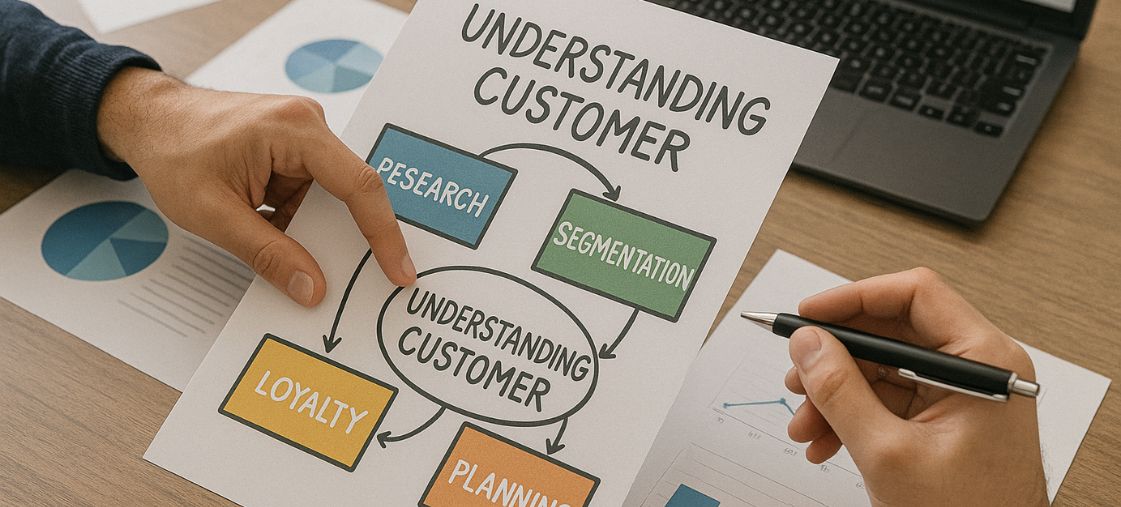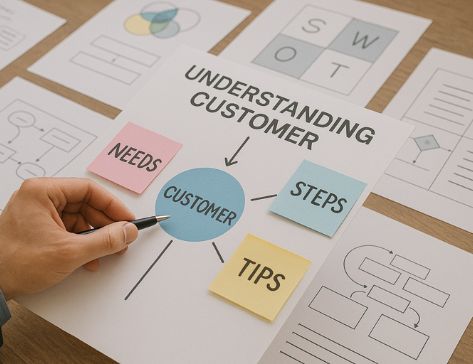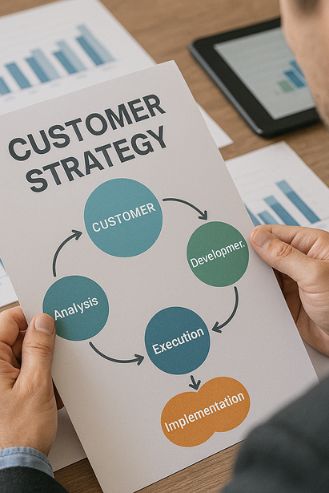
Understanding Customer Strategy: Frameworks, Steps, and Tips
Customer strategy is the deliberate plan your organization uses to understand, create, deliver, and capture value from your customers in ways that also drive profitable growth. Unlike isolated marketing or sales tactics, a strong customer strategy weaves insights, positioning, channels, service, and measurement into a single, coherent system. When this system is clear, teams focus on what matters, customers feel understood, and results compound over time.
Start by recognizing that customer strategy is not a one-and-done document; it’s a living operating model. It connects what customers need with what your business can uniquely provide—today and as needs evolve. To make that concrete, many companies adopt a staged approach covering insights, segmentation, value propositions, journey design, channel activation, service, and measurement. For teams building the service dimension in particular, this 7‑step customer service strategy plan is a useful reference to ensure your support experience systematically reinforces your brand promise.
Well-crafted customer strategies clarify who you will win with—and just as importantly—who you will not prioritize right now. They document the pains, gains, and jobs customers care about, then translate these into crisp promises at the moment of decision. Great strategies also specify the channels and motions (self-serve, product-led, sales-led, community) you’ll use to efficiently acquire and retain those customers, including what must change in your product, content, operations, and incentives.
Finally, customer strategy codifies how you learn. It sets up instrumentation to observe behavior, listen to feedback, and test hypotheses, turning your roadmap into a continuous improvement engine. To situate your work in the broader context of go-to-market thinking, it helps to study evolving marketing strategy frameworks shaping 2025 planning cycles, so your customer strategy remains aligned with modern tools and practices.

What is a customer strategy?
A customer strategy is a cross-functional blueprint that aligns who you serve, the value you promise, and the system by which you repeatedly deliver that value. It sits above marketing plans and below corporate strategy, ensuring every touchpoint reflects clear choices about segments, needs, and positioning. Practically, it informs product roadmaps, pricing, messaging, channel mix, success metrics, and the service standards that build trust. When written well, teams can use it to make day-to-day tradeoffs—what to prioritize, what to pause, and what to measure—without endless meetings or ambiguity.
Seven actionable steps to build yours
1) Gather deep customer insights
Combine qualitative interviews, surveys, usage analytics, and frontline feedback to build a nuanced view of pains, motivations, and switching triggers. Map the jobs customers are hiring your product or service to do. Synthesize patterns into personas or segment narratives that are decision-useful—not vanity posters. Your output should be a concise insight brief: the top problems to solve, the outcomes customers value, and language they naturally use.
2) Segment and prioritize
Not all customers deliver equal value or cost to serve. Define segments by outcome needs and buying behavior, then score them by attractiveness (size, growth, willingness to pay) and fit (your ability to win). Pick a primary segment to design around for the next 6–12 months. Capture what “good fit” looks like so sales and marketing can target precisely, and outline clear disqualification criteria to protect focus.
3) Craft a sharp value proposition
Translate insights into a differentiated promise: who it’s for, the core benefit, and the reason to believe. Make it specific enough to repel poor-fit prospects. Pressure-test it with real customers and iterate until it is both memorable and true. Ensure pricing, packaging, and your onboarding flow reinforce the same promise so the experience feels consistent from ad to activation.
4) Design journeys that reduce friction
Map the evaluation, purchase, activation, and retention stages. For each stage, list desired customer outcomes, key decision moments, and the leading friction points you must remove. Replace internal jargon with what customers are thinking and feeling. Then specify the content, product cues, and human touch required at each step to increase conversion and time-to-value.
5) Choose efficient channels and motions
Decide whether your growth will be product-led, sales-assisted, partner-driven, or a blend. Pick a small set of channels your team can execute well, then build repeatable plays before expanding. Document channel-role clarity—for example, SEO for steady demand, paid for tests and seasonal spikes, partners for reach, community for advocacy—so the mix is intentional rather than accidental.
6) Engineer a service experience that earns loyalty
Service is where promises meet reality. Define service standards, response times, escalation paths, and the feedback loops that inform product fixes. Equip frontline teams with knowledge bases, playbooks, and the authority to solve problems. Measure effort, not just satisfaction; reducing effort is often the fastest path to retention and referrals.
7) Instrument, measure, and learn
Tie your strategy to a short list of outcome metrics (e.g., activation rate, weekly active usage, gross retention, NPS, LTV:CAC). Pair these with leading indicators you can move in weeks, not quarters. Run disciplined experiments, write one-page readouts, and keep a living assumptions log so institutional learning accumulates even when teams change.
Common pitfalls and how to avoid them
- Vague target: If “everyone” is your segment, no one is. Choose a primary segment and write for them.
- Promises without proof: Pair claims with demos, case studies, benchmarks, or social proof.
- Channel sprawl: Too many channels dilute focus. Master a few, document plays, then expand.
- Missing feedback loop: No mechanism to capture and act on customer signals means stalled learning.
- Measuring vanity metrics: Favor outcomes (activation, retention, revenue) over surface-level activity.
Tools, templates, and operating rhythms
Keep your customer strategy usable by putting it into lightweight artifacts teams reference daily. Suggested one-pagers include: “Who we win with,” “Value proposition and proof,” “Journey map with friction points,” and “Channel charter with KPIs.” Establish a weekly 30‑minute review to inspect customer signals (new insights, top issues, experiment results) and a monthly 60‑minute checkpoint to revisit segment focus, roadmap implications, and resourcing.
- Insight brief: Top pains, language, and switching triggers by segment.
- Message map: Claims, reasons to believe, and proof assets aligned to use cases.
- Experiment tracker: Hypotheses, results, decisions, learnings, owners.
- Scorecard: A few outcome metrics with targets, reviewed weekly and monthly.
Measurement and iteration
Define success in advance. For acquisition, monitor qualified pipeline, win rate, and blended CAC. For product engagement, track time-to-value, weekly active usage, and adoption of sticky features. For retention, watch gross and net revenue retention, support effort scores, and referral rates. Review metrics alongside qualitative insights—especially loss reasons and churn interviews—to understand the “why” behind the numbers. Codify what you’ll stop, start, and continue each month so your customer strategy compounds through disciplined iteration.
Conclusion and next steps
A durable customer strategy turns scattered activities into a coherent system that consistently creates and captures value. By grounding your choices in customer insight, focusing segments, making sharp promises, simplifying journeys, choosing efficient channels, engineering service, and learning fast, you build an operating rhythm that compounds.
As you put this guide into practice, benchmark your messaging, channels, and creatives against your category to find fast wins. Competitive intelligence tools like Anstrex can help you see what’s resonating in your market and inspire better tests. Most importantly, keep the loop tight: listen, build, measure, and iterate. That discipline—more than any single tactic—is what makes customer strategy your unfair advantage.


